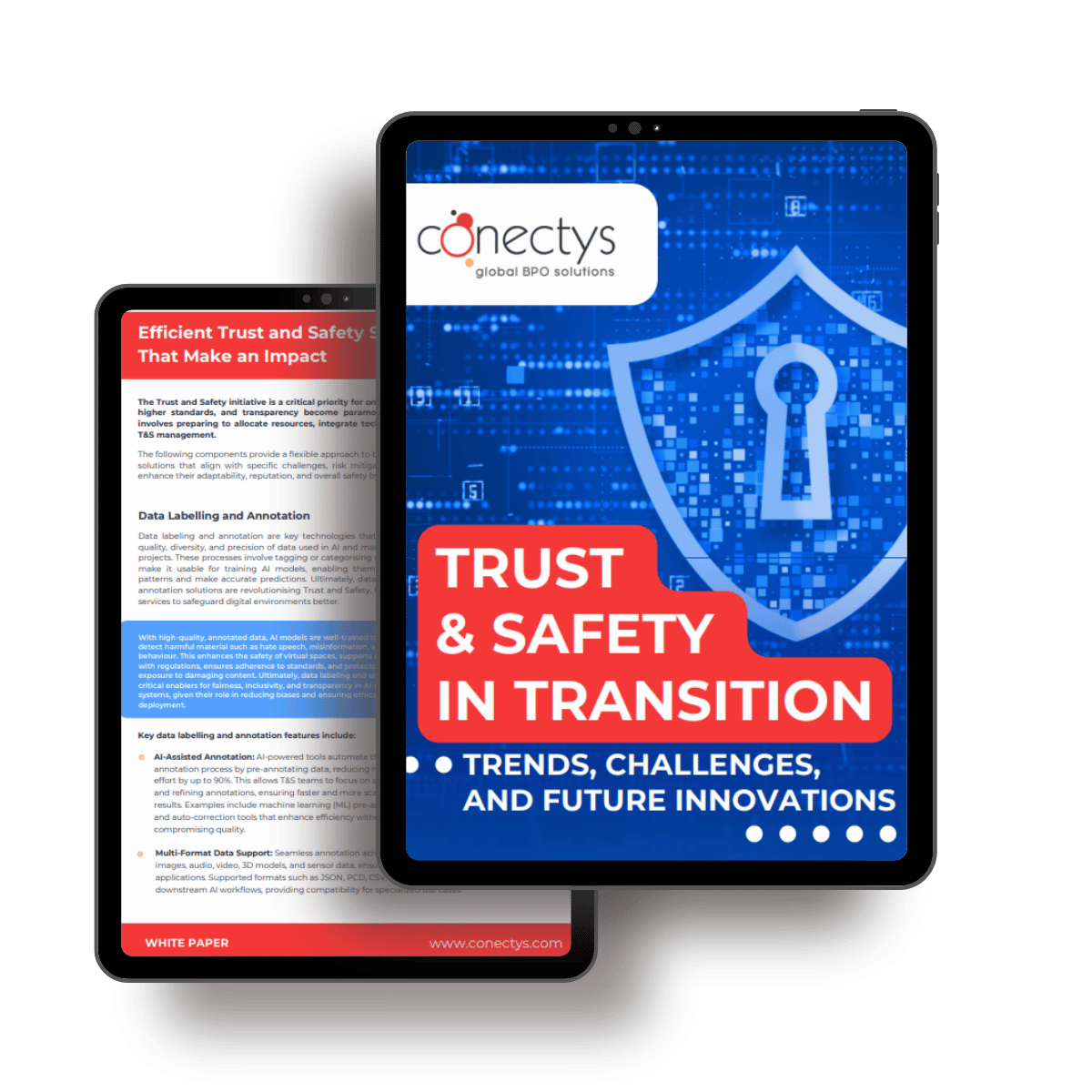Discover Key T&S Trends, Challenges, and Future Innovations
As harassment, hate speech, and cybercrime continue to grow online, the safety challenge is no longer just efficiency—it’s ensuring platforms remain resilient and secure amidst the escalating threats in the digital landscape. This underscores a critical need: moving beyond what has traditionally been considered sufficient in Trust and Safety.
Today, virtual services demand stronger, more adaptive measures to protect individuals, safeguard communities, and uphold brand integrity. Achieving this requires intelligent, forward-thinking systems that anticipate and mitigate evolving risks.
Artificial intelligence plays a central role, shifting the focus from reactive interventions to proactive, data-driven protection embedded seamlessly within content moderation, compliance, and cyber threat management. At the heart of this transformation is the refinement of data annotation and labelling, which is essential for training AI to detect and prevent violations more accurately.
Yet technology alone is not enough. The synergy between human expertise and automation remains critical to ensuring that online spaces are not only secure but also inclusive and conducive to positive interactions.
Explore our white paper for key strategies shaping Trust and Safety in 2025 and beyond. See how your organisation can harness these trends to stay ahead.





